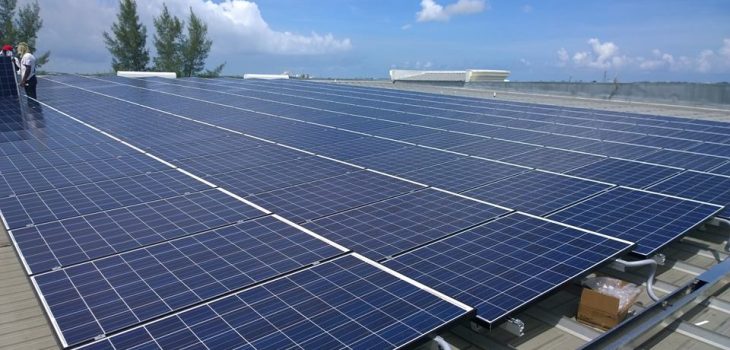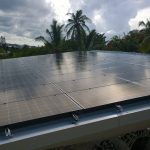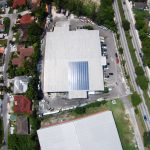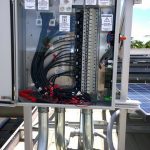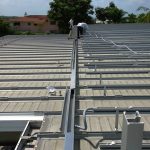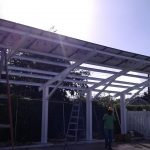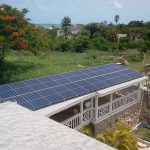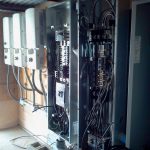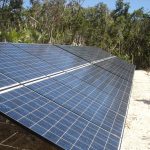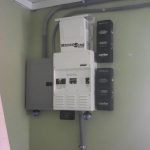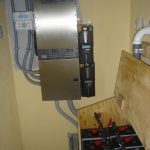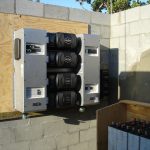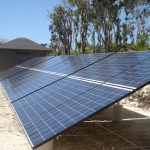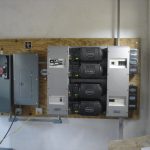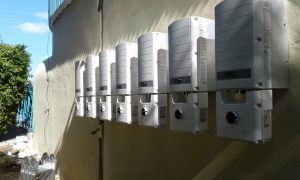
Start by downloading BPL’s application here:
http://www.bahamaselectricity.com/SSRG%20Application%20-%20FINAL%20ver%202.1.pdf
Once you have the application, we will need to ascertain approximately how much power you used over the past year so our design fits BPL’s requirements. Please have one years worth of electric bills at hand, available from BPL, for our site visit.
This type of system has become the most commonly installed type due to the lack of need for maintenance and much lower price than a battery based system. A grid tied, battery-less solar system in the Bahamas is allowed by BPL (formerly BEC) and after the required paperwork is submitted and approved, you will be allowed to “spin your meter backward” once your system is installed. Currently, BPL offers an approximate 50% credit for each kWh you produce. Island Solar will help guide you through the process and install your net metered system professionally and with an eye for the details.
A grid tied, battery-less system is typically composed of solar panels, mounting, inverter(s) and the associated safety equipment. The components are constantly changing and the use of different types of inverters can be very site specific. Where there are shading issues, we will often install micro-inverters, that is, inverters which are installed under each panel so that shading will typically only reduce the power output of the shaded panel instead of an entire string of solar panels. Where there are no shading issues, we find we get excellent efficiency and can cut down on installation time by using string or central inverters. These have been used for many years and are efficient and reliable.
Grid tied systems essentially “trade”, not “sell” power back, although for the sake of discussion here, I’ll refer to it as “sell back”. Think of this as a power “bank account”. They track your power production month by month and give you (currently) 50% credit for the power you have made and apply it to the power you have used. This is why a good design is important. We will make sure you are not giving your power away for free, and will also ensure that the percentage of power you make to apply toward your power bill is as accurate as possible.
Island Solar will design your grid tied, battery-less system for you, install it and help you get connected and “selling back” your power efficiently and painlessly. Remember that without batteries, you will need to have a generator for those times when there are power outages. The advantage is that you can install roughly twice the amount of battery-less solar than you would with a battery based off grid system for the same amount of money.
More and more countries across the Caribbean are starting to accept grid tied, net metered solar as a way to lessen the use of polluting and expensive diesel fuel usually used to run their islands power generators. The Bahamas is no longer the exception! The sun is a renewable, reliable, non-polluting and reliable source of power for your home here in the Bahamas and Island Solar is well equipped to install your quality system for the long run!
Grid Tied with Battery Storage
For informational purposes, we’ll break this section down into two sub-sections.
The first type we will discuss is the grid tied system which uses the available solar power, then switches to the grid for support. This is a typical type of solar system where the utility does not allow intertie’s for “sell back”.
The second type is for use as a “sell back” system, but with frequent power outages or rolling brownouts, allows the client to have an almost seamless switchover to battery power when the grid is down.
1. Grid tied with battery system support (non sell-back)
On islands or in countries where the local utility does not allow for a “sell back” arrangement, these systems are common and very useful for businesses or homes that need close to continuous power. We install the solar system so that it charges the battery bank. Island Solar installs the utility grid to the inverter in the system. Programming the system correctly ensures that the home uses the power the solar system makes first, then switches over to the local utility automatically until the solar system again charges the battery to pre-programmed parameters. This allows for maximizing the use of your solar power, greater longevity of the batteries due to decreased discharge cycles, and almost seamless electricity within the system. I say almost because there can be a half a second of so automatic transfer between the two sources of electricity (solar and grid).
When Island Solar is designing these systems we talk with the customer about how much battery capacity they might need as well as what percentage of their power they might like to make from solar. BPL does allow this type of system.
2. Grid tied with batteries (sell-back, net metering or net billing)
Many people like the idea of “selling back” power but also want the independence that batteries provide. Generators are expensive, noisy and require regular maintenance. A battery based, grid tied solar electric system provides all the options and benefits these customers require. The downside for many people is that batteries are expensive and require maintenance. Ask us about our systems that allow for the addition of the Tesla Powerwall (add link: https://www.tesla.com/powerwall ) either during or after your initial install. In other words, a system that you can add batteries to at a later time to power your critical loads like water pumps, lighting, fans, refrigerators and more.
In a battery based, grid tied system with a utility intertie (sell back) agreement with the local power company, your batteries will be kept at a preprogrammed level (float voltage)and any residual power being made by your solar panels not being used by the home in the moment will be sent back to the utility grid. A bi-directional meter measures that outgoing power and the utility puts that power in a power “bank account” for you. Each month the utility subtracts what you put back onto the grid from the total household usage. You get to use your power “credit” toward your bill. If you made more than what you used the power stays in your power “bank account” until it is needed. The current utility agreement allows the utility to apply your excess production to your electricity bill, once the proper paperwork and documentation are complete. This is why proper design is important. We only want you to make the power you will use, not oversize the system and allow the utility to keep your excess power.
You can download the residential application form here – http://www.bahamaselectricity.com/SSRG%20Application%20-%20FINAL%20ver%202.1.pdf
Contact Island Solar for help with your application and more information.
